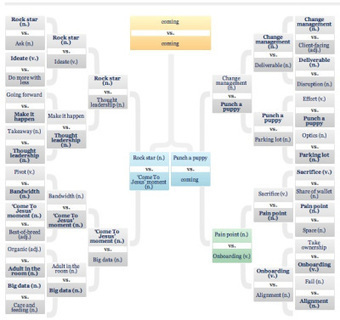Use these examples and key points to convince your clients and your peers to rise above the sea of jargon we all navigate every day... .
.. So before you reach for jargon when you create content, ask yourself questions like, “What message am I trying to communicate here?” “Will my target audience find it both relatable and compelling, or am I resorting to jargon as a crutch because I don’t honestly know what I’m attempting to say?” Or, even worse, “Am I inventing made-up language to create what can be promptly dismissed as pseudo science?”
If the answer to that last question is “yes,” then you’ll risk allowing jargon overload to defeat the purpose of the content by undermining the messaging campaign. An influential teacher inspires desired outcomes from students (i.e., acquired knowledge) by demystifying the unknown. As content marketing professionals, we should push ourselves — and our clients — toward this same standard....



 Your new post is loading...
Your new post is loading...









Jargonators begone. You can't create clear, powerful content on a foundation of jargon.